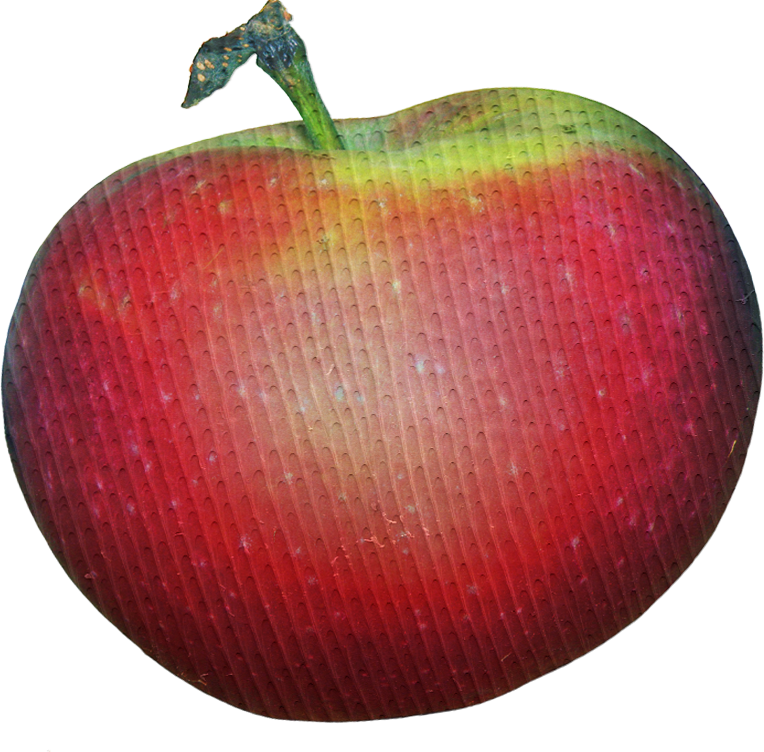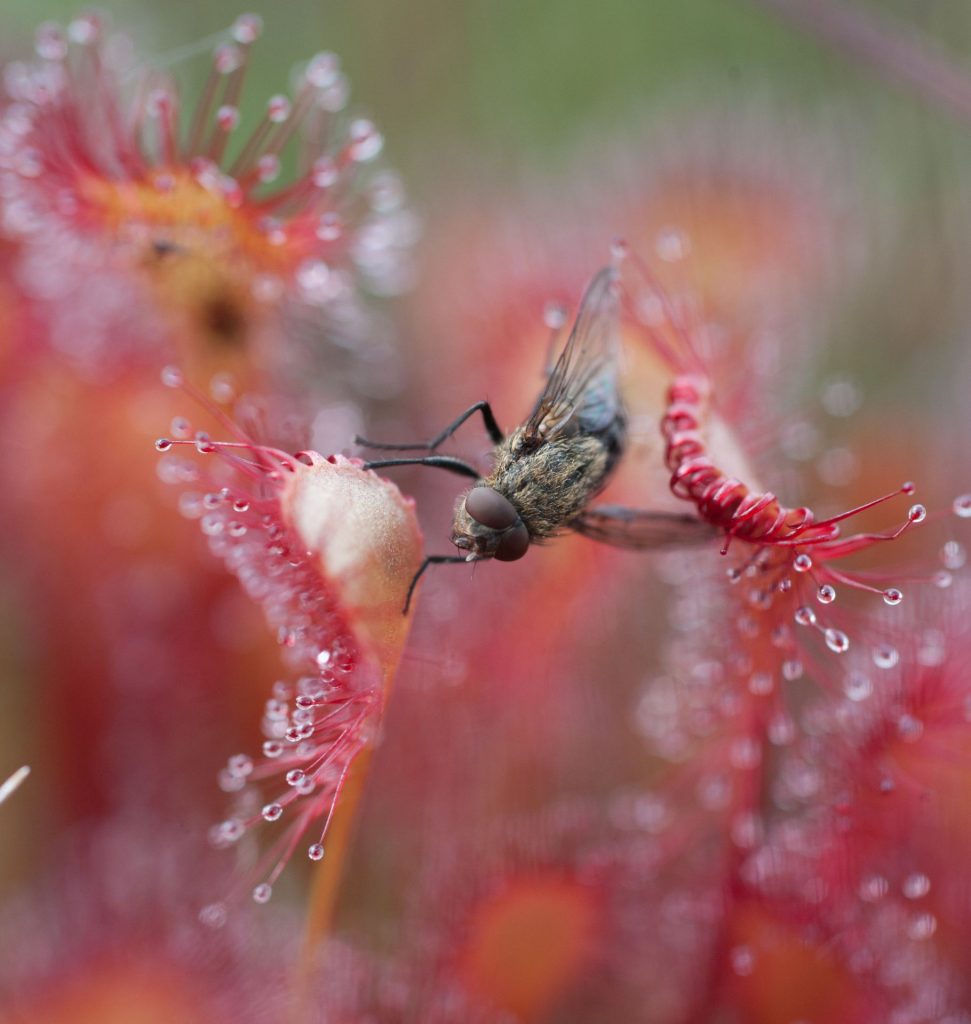Collaborative project with Kenji Fukushima and Tanya Renner
The average apple is sprayed with pesticides 33 times before you bite into it. Reducing this number by half would not only reduce the associated risks for human health and the natural environment, but also save economic costs. Carnivorous plants have evolved amazingly effective insect-repellent surfaces and viscoelastic trapping fluids to capture their prey – and we want to pave the way for utilising these for the bio-engineering of mechanically protected crop plants that need fewer toxic pesticides.
 If only we could get the wetness-activated ‘aquaplaning’ surface of the Nepenthes trap rim onto an apple, every rain would cause pest insects to slip off and we could spray our fruits with plain water instead of toxic pesticides!
If only we could get the wetness-activated ‘aquaplaning’ surface of the Nepenthes trap rim onto an apple, every rain would cause pest insects to slip off and we could spray our fruits with plain water instead of toxic pesticides!
In order to realise this bold dream, we already investigate the developmental underpinnings of the wetness-activated slippery pitcher plant rim. This unusually wettable plant surface is safe for insects to walk on when dry, but when it is wetted by rain or condensation, insects literally aquaplane into the trap like a car on a wet road. This bimodality makes the pitcher rim interesting for crop breeding because, in contrast to permanently slippery surfaces, wetness-activated slippery surfaces give access to beneficial insects such as pollinators and predators during dry times but whenever it rains, all insects are washed off. The key property here is complete wettability –extraordinary for plant surfaces which are usually water-repellent.
Although gene transfer is a popular strategy to introduce a desired trait in crop species, it is not well understood what determines trait transferability. Accumulating evidence indicates that a large number of trait convergences, including plant carnivory, were achieved by the same genetic changes. This suggests that such changes depend less on the genetic background, as the same mutations led to the same evolutionary outcomes in completely different organisms. Together with Kenji Fukushima at the University of Würzburg in Germany, and our long-term collaborator Tanya Renner at Penn State University in the U.S., we will examine this idea with key traits of carnivorous plants, which are one of the most prominent examples of convergent evolution. Through the collaboration of the three labs with complementary expertise covering bioinformatics (Kenji), evolutionary biology (Tanya) and biomechanics (that’s us!), we aim to transfer traits related to functional surfaces and digestive/retentive fluids that potentially increase plant protection against pests or improve plant nutrition. This is pioneer research with the potential to lead to novel, environmentally friendly approaches to pest control.
As the biomechanics partner in the project, we will focus on the functional characterization of viscoelastic trap fluids and slippery trap surfaces. In collaboration with our partners and with local collaborators in the School of Chemistry and the School of Biological Sciences, we will use a novel spray-on method for transient genetic transformation to either silence candidate genes for carnivorous traits in the native carnivorous species, or ectopically express them in non-carnivorous model species and crop plants. This eliminates the risks and environmental concerns generally associated with transgenic plants because the transgene is only expressed for a short time. We will then assess and quantify the effect of the transformation on the resulting phenotype and its functional properties.
Rententive fluids of Drosera, Pinguicula and Nepenthes
The coexistence of viscoelastic and non-viscoelastic phenotypes in closely related Nepenthes species offers a unique opportunity to study the regulation of this highly interesting trait for the first time. We will quantify the viscoelasticity of Nepenthes trap fluids across a range of species. The use of a portable extensional rheometer developed in our lab enables us to do these measurements in situ, thereby avoiding artefacts from fluid degradation due to transport and storage. To identify candidate genes that underlie the glue biosynthesis pathways, our collaborators will conduct comparative transcriptomic studies of species with and without viscoelastic fluids. We will then test the function of these candidate genes using the above described transient transformation technique. The resulting biomechanical fluid properties will be quantified by extensional rheometry, and the biological function will be assessed in behavioural assays with insects.
 Carnivorous plants like this sundew (Drosera rotundifolia) produce viscoelastic secretions that turn their leaves into highly effective ‘flypapers’ for insect capture.
Carnivorous plants like this sundew (Drosera rotundifolia) produce viscoelastic secretions that turn their leaves into highly effective ‘flypapers’ for insect capture.
Slippery trapping surfaces of Nepenthes and Cephalotus
The collar-shaped upper rim of the pitcher traps of Nepenthes and Cephalotus is slippery for insects due to its specialized surface topography. In Nepenthes, a complicated hierarchical pattern of radial ridges, grooves and acute-angled steps causes water to spread on the rim surface and form a continuous stable film on which insects ‘aquaplane’ into the trap. While the trapping mechanism of Nepenthes is well-studied, that of Cephalotus has never been investigated in detail. We will characterize the morphology and function of the imbricate hairs on the Cephalotus trap rim with a combination of imaging techniques (SEM, micro-CT), wetting trials, behavioural assays (running trials) and friction force measurements with live insects. We will use the same experimental approaches to characterize the rim surface phenotype caused by transient gene silencing in Nepenthes and Cephalotus, and its implications for surface wettability and trapping function.